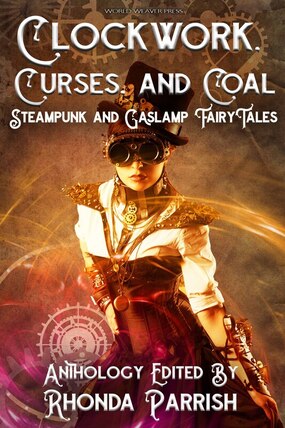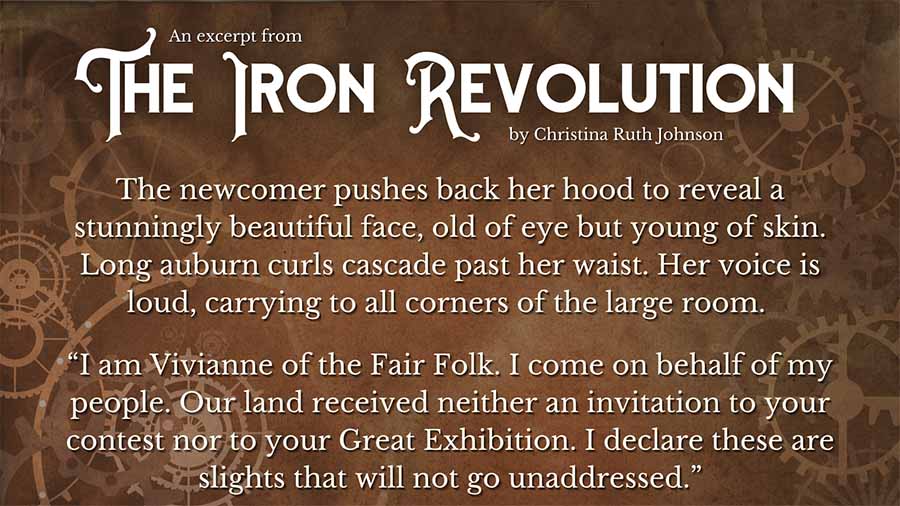 Guest Blog by Christina Ruth Johnson The Crystal Palace hovers in the background of "The Iron Revolution," but it was certainly at the forefront of everyone’s mind in Great Britain in 1851. And, like my story, it all started with a contest. Prince Albert wanted to create a temporary building to house the Great Exhibition of 1851, the first ever international show of manufactured goods. He advertised for designs from architects and ended up awarding the coveted contract to Joseph Paxton, known for designing greenhouses. His design for the exhibition was not only emblematic of the Industrial Age, it was also cost and time efficient. Over the course of only six months (unheard of at the time), Paxton’s team erected what came to be known as his “Crystal Palace” in the middle of Hyde Park. The only construction materials used were iron and an astounding amount of glass—the source of the nickname. Using prefabricated parts already available instead of bespoke ones cut costs considerably. Additionally, the recently invented telegraph saved time, allowing for rapid communication between London and the manufacturers. The end result did look like a giant greenhouse: a vast, barrel-vaulted hall that made copious room (about 990,000 square feet!) for everything from large machinery to full-grown trees to life-size models of dinosaurs. Over 100,000 objects went on display, representing nearly 14,000 exhibitors. Dogs and smoking were prohibited inside, as was alcohol. Instead, the organizers offered bottled soft drinks, filtered water, and free samples. For the first time ever, there were also public restrooms for men and women. Over six million people (a third of Britain’s population at the time) attended the exhibition. Other than on a battlefield, it was the first time that so many nations of the world had ever come together in one place. Looking at the various images of the Crystal Palace that we have today, I can only imagine the audience’s astonishment that such a structure was created by human hands. A paradox of magic and science. What better setting for a steampunk fairy tale? Sources, photos, and further reading https://www.royalparks.org.uk/whats-on/blog/the-great-exhibition-1851 http://www.crystalpalacemuseum.org.uk/ https://www.britannica.com/topic/Crystal-Palace-building-London https://www.vam.ac.uk/articles/building-the-museum#slideshow=12041177&slide=0 https://web.archive.org/web/20140814033429/http://www.vam.ac.uk/content/articles/w/watercolours-of-great-exhibition/ Read an account by Charlotte Bronte of her visit to the Great Exhibition: http://www.mytimemachine.co.uk/?p=74 Christina Ruth Johnson has her master’s degree in Art History and is currently working as a teacher, archaeologist, and freelance writer. Her work has previously appeared in Scheherezade’s Bequest and World Weaver Press’ Frozen Fairy Tales. She is honored and excited to share her story, "The Iron Revolution", in Rhonda Parrish’s Clockwork, Curses and Coal.
0 Comments
Your comment will be posted after it is approved.
Leave a Reply. |
World Weaver PressPublishing fantasy, paranormal, and science fiction. Archives
February 2024
|
- Home
-
Books
-
All Books
>
- Beyond the Glass Slipper
- Bite Somebody
- Bite Somebody Else
- Black Pearl Dreaming
- Cassandra Complex
- Causality Loop
- Clockwork, Curses, and Coal
- Continuum
- Corvidae
- Cursed: Wickedly Fun Stories
- Dream Eater
- Equus
- Fae
- Falling of the Moon
- Far Orbit
- Far Orbit Apogee
- Fractured Days
- Frozen Fairy Tales
- Glass and Gardens: Solarpunk Summers
- Glass and Gardens: Solarpunk Winters
- Grandmother Paradox
- Grimm, Grit, and Gasoline
- Haunted Housewives
- Heir to the Lamp
- He Sees You When He's Creepin': Tales of Krampus
- Into the Moonless Night
- Jack Jetstark's Intergalactic Freakshow
- King of Ash and Bones (ebook)
- Krampusnacht
- Last Dream of Her Mortal Soul
- Meddlers of Moonshine
- Mothers of Enchantment
- Mrs Claus
- Multispecies Cities
- Murder in the Generative Kitchen
- Recognize Fascism
- Scarecrow
- Sirens
- Shards of History
- Shattered Fates
- Skull and Pestle
- Solarpunk (Translation)
- Solarpunk Creatures
- Solomon's Bell
- SonofaWitch!
- Speculative Story Bites
- Trenchcoats, Towers, and Trolls
- Weredog Whisperer
- Wolves and Witches
- Anthologies and Collections
- Novels
- Novellas
- Fairy Tale
- Fantasy
- Romance
- Science Fiction
- Urban/Contemporary Fantasy
- Young Adult SFF
-
All Books
>
- Blog
- About
- Contact
- Press / Publicity
- Newsletter Signup
- Privacy Policy
- Store



 RSS Feed
RSS Feed